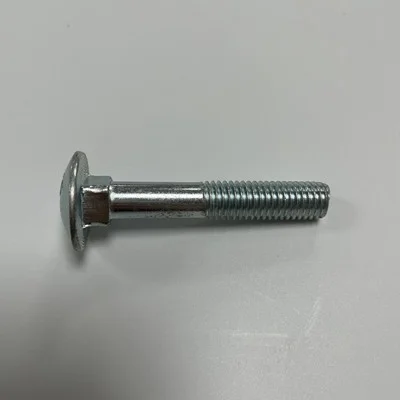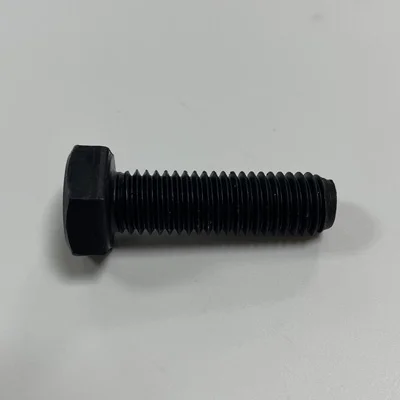caTEGORIES
Tags
Bolt Sizing Best Practices for Metal, Concrete, and Composite Materials

Posted: August 14, 2025
Categories: News
Tags: news
Picking the perfect bolt size is key for strong industrial fastening. It affects how much weight a bolt can support, how solid the structure stays, and keeps things safe. Whether you’re joining metal, setting anchors in concrete, or handling composites, the right size keeps everything secure and avoids problems. At QEWIT, a dependable supplier of certified fasteners, we assist engineers and buyers in finding bolts that match their projects. Here’s our clear guide to getting bolt sizing right every time.
Why Bolt Length Matters
Choosing the wrong bolt length can mess up safety and slow things down. A bolt that’s too short might not catch enough threads, so it could break. One that’s too long might hit other parts or not tighten properly.
Bad sizing can cause:
- Weak hold on materials
- Bolts bending or wearing out from ongoing pressure
- Messed-up threads or poor fits with nuts and washers
- Wasted time and extra costs
Good sizing keeps joints tough and makes repairs simpler, especially for important setups like machine bases, bridges, or wall fixtures.
Key Bolt Measurements to Know
Before you choose a bolt, get familiar with these terms:
- Bolt Diameter (D):The width, like M6, M12, or ½”.
- Bolt Length (L):The distance from under the head to the end.
- Thread Pitch:How tight the threads are; coarse works for softer stuff, fine for precise jobs.
Also keep in mind:
- Grip Length:The thickness of what the bolt holds together.
- Thread Engagement:Try for 1–1.5× the diameter in steel, or 2× in aluminum.
QEWIT supplies bolts that follow standards like DIN 931, DIN 933, and ISO 4017. They’re available in carbon steel, stainless steel (A2/A4), brass, or alloys.
Sizing Bolts for Metal
Accuracy matters in metal projects. Your bolt length should cover:
- All the material layers
- Any washers or nuts
- Enough threads to match the material’s strength
Tip: Fully threaded bolts, like DIN 933 Hexagon Set Screws, grab the threads fully. This stops them from loosening when things shake.

You’ll often use them for:
- Mounting plates on machines
- Beams and channels in buildings
- Equipment flanges
QEWIT’s tough bolts (Grades 8.8, 10.9, 12.9) are built to last and resist rust with coatings like Zinc Flake or HDG (Hot Dip Galvanised).
Sizing Bolts for Concrete
Concrete anchoring needs extra thought. When selecting bolts, consider:
- Embedment Depth:Usually 8–12× the bolt diameter for heavy loads.
- Edge Distance:Stay 4–6× the bolt diameter from edges to prevent cracks.
- Bolt Type:Thread-forming bolts, like QEWIT’s Lightning Bolt, reduce stress and can be reused.
Unlike standard through bolts or wedge anchors, QEWIT’s Lightning Bolt uses a high-low thread design. It prevents concrete from cracking and works great in brick, too, where other anchors struggle.
Choosing Bolts for Composites
Composites, like wood-concrete or plastic-metal combos, come with special challenges:
- Some materials are soft or brittle
- Different parts expand at different speeds
- You need to watch tightening limits
Go for bolts with:
- Bigger washers to spread pressure evenly
- Flanged heads (e.g., DIN 6923 flange nuts) to handle vibrations
- Coatings to stop rust in reactive materials
QEWIT provides custom fasteners with exact head shapes and coatings for composites. Whether you’re working with MDF, acrylic, or fiber-reinforced panels, the right bolt size ensures strength and a long lifespan.
How to Size a Bolt: Step-by-Step
- Measure the Layers
Add up the thickness of everything the bolt goes through, like plates, washers, or gaskets. - Choose Thread Engagement
Follow the rules: 1.5× diameter for steel, 2× for aluminum. - Add Nuts and Washers
Include their thickness, especially in blind holes. - Think About Tightening
Pick longer bolts for controlled tightening, shorter ones for basic fits. - Select the Right Standard
Use DIN 931 for part-threaded bolts (stronger for side forces) or DIN 933 for fully threaded ones. - Check the Environment
In salty or chemical areas, use rust-resistant coatings like GEOMET or Magni.
How QEWIT Helps You
QEWIT makes picking bolts simple:
- Over 30,000 products, including DIN/ISO bolts in M2–M60 sizes
- Custom bolts made from your sketches
- Fast delivery of common sizes (DIN 933, DIN 931, DIN 985) in 1–2 weeks
- Certificates: ISO 9001, 3.1 to DIN EN 10204, PPAP Level 3
- Finishes: Zinc Plated, HDG, Zinc Flake, GEOMET, Magni
Need a unique size? We offer production-to-drawing and quality checks with optical sorting before shipping.
FAQs
Q1: How much thread engagement do metal joints need?
A: Shoot for 1–1.5 times the bolt diameter. For an M10 bolt, that’s 10–15 mm in steel.
Q2: Can a bolt be too long?
A: Yes. It might hit the bottom, stop you from tightening it right, or get in the way.
Q3: What about washers or locknuts?
A: Always count their thickness in your bolt length to make sure the threads grip properly.


